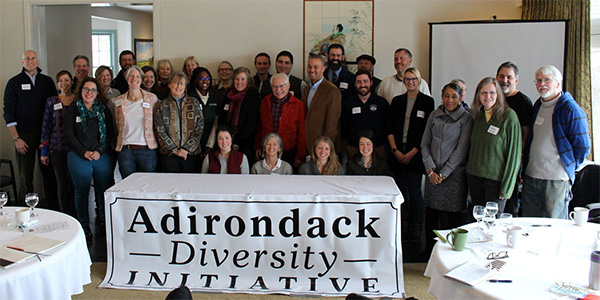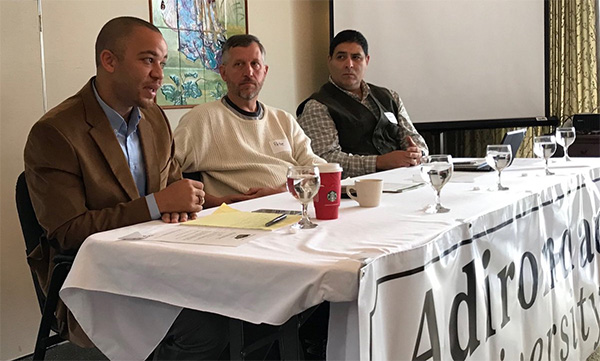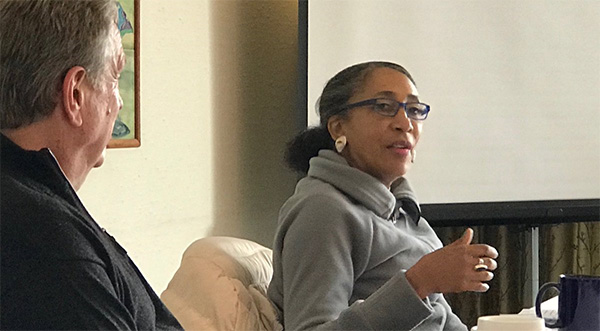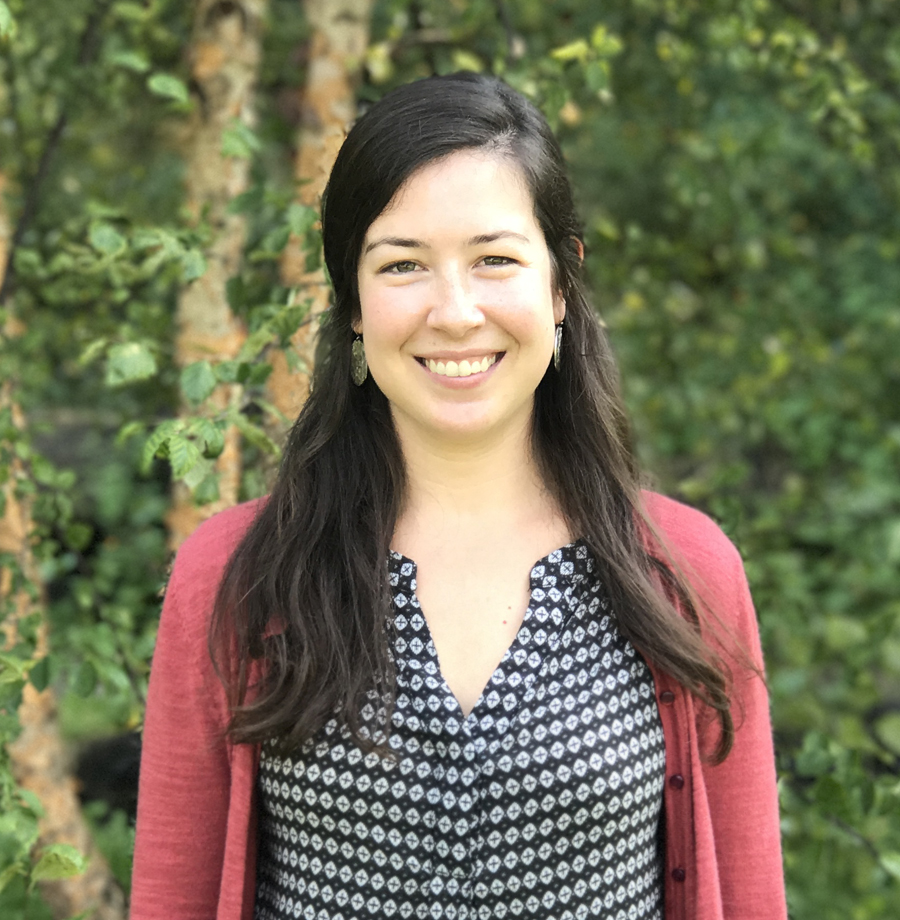
Diversity – A Vision for the Adirondacks
By: Jackie Bowen - Adirondack Council Conservation Fellow
Friday, December 22, 2017
On December 2, the Adirondack Diversity Initiative (ADI) held its 2017 Forum: Envisioning Our Future. The forum brought together individuals from across the Adirondack Park and New York State to engage in a conversation about the diversity initiative’s direction, strategic plan, and initiatives. This event marks the fourth symposium held to discuss and address diversity and inclusivity within the Adirondacks. It is where ADI’s roots lie, having been created out of the first symposium held in 2014.
The Adirondack Diversity Initiative was founded to “develop and promote strategies to help the Adirondack region and its nearby communities become more welcoming and inclusive of all New Yorkers, both visitors and residents: a more inclusive Adirondacks will benefit the economic, social, cultural, and political health of the communities within.” Since 2014, ADI has helped bring over 30 affiliate members together to facilitate diversity workshops and education sessions, coordinate a regional youth exchange program promoting diversity and nature, and conduct marketing and outreach to minorities and the LGBTQ community, among other things. Interested in learning more? Check out ADI at www.diverseadks.org.
The events were broken into four parts: a Friday evening session, Saturday morning and afternoon sessions, and a Saturday evening reception. The morning session included a panel-led discussion focused on the Adirondack Diversity Initiative’s recent progress and its next steps. The keynote speaker, Samara Swanston, spoke to her role in the environmental justice movement. For the afternoon session, the Adirondack Center for Writing conducted a hands-on workshop called Identity and Belonging. Poets Adam Falkner and Sofia Snow led the Friday evening and Saturday afternoon sessions focused on recognizing your identity, looking critically at diversity, communicating differences and understanding belonging within our community. The day was closed out by a reception, co-sponsored by John Brown Lives! and the Adirondack Diversity Initiative, hosted by the Uihlein Foundation at Heaven Hill, to welcome Samara Swanston and new ADI staff Melanie Reding.
 Group photo from morning session.
Group photo from morning session.
The panel discussion was kicked off by Pete Nelson, co-founder of ADI and adjunct faculty at North Country Community College, who provided a brief history of the initiative and its structure. Although it is an all-volunteer, the effort has continued to educate and develop initiatives in the Park, while moving the dialogue on diversity forward. As Nelson noted, the organization’s staying power is a “testament to the importance of the issue and that we have people that care.” With this strong participatory foundation, the Adirondack Diversity Initiative program is now prepared to shift its focus to attaining the “next level,” which will include raising money and expanding programing, and hiring full-time staff.
Dr. Donathan Brown discussed the detailed diversity initiative business plan he had recently created. This assesses workforce sustainability, economic tensions (e.g. tax burdens) and demographic trends. An associate professor at Ithaca College, Dr. Brown has a background in research concentrated on “the intersection of race, rhetoric and public policy, particularly pertaining to African Americans and Latinos.” By understanding the information and trends of businesses and consumers in the state, efforts can be re-focused on developing ways to encourage businesses to be involved in providing a more welcoming community for more diverse groups of people. The intent behind his business plan was to point out the problems while also pointing to a cure. Dr. Brown’s plan facilitated a Park-centric discussion amongst forum attendees about what is being, and can be, done to encourage this type of business engagement, locally.
Rocci Aguirre Conservation Director of the Adirondack Council pushed the participants to consider safety and welcome-ness for both diverse Park residents and visitors. It is an unfortunate reality of the Adirondacks that people are often not welcoming of individuals different from themselves, particularly towards people of diverse races and ethnicities. Aguirre addressed this directly, calling it the “welcoming factor” and asking how ‘welcome-ness’ can be gauged in the Park? How can we help visitors feel safe in the Park? The solution-oriented group of participants and panelists discussed, among other things, completing an audit to measure this factor throughout the region. Additionally, the information could be used to craft educational programs for all levels of schools and workforces, particularly the tourist industry, to build understanding and decrease the cultural disconnect. From these discussions, participants helped participating Adirondack Diversity Initiative member organizations specifically identify some of its next steps.
 Panelists (L-R): Dr. Donathan Brown, Pete Nelson, and Rocci Aguirre.
Panelists (L-R): Dr. Donathan Brown, Pete Nelson, and Rocci Aguirre.
The bell for more funding to build programmatic support was rung again by Chris Morris, Communications Officer at the Adirondack Foundation, and William C. (Willie) Janeway, Executive Director of the Adirondack Council. Additionally, Janeway reported interest in and potential support for the Adirondack Diversity Initiative from the Governor’s Office. Advocates are asking the state for Environmental Protection Fund support of the ADI and environmental justice in the Adirondack Park.
The presence of multiple organizations at the forum allowed for productive and collaborative conversations. For example, Alanah Keddell-Tuckey, a public affairs specialist from the Dept. of Environmental Conservation’s Office of Environmental Justice, raised the idea of developing an Adirondack-specific version of the green book travel guide. First published in 1936, the green book informed African Americans “of the safest places to eat, sleep or get a haircut when on the open road.” Many individuals at the forum believed there would be value in offering a brochure detailing diversity-friendly businesses, hiking areas, etc. across the Park to encourage people to visit the Adirondacks while also feeling safe.
For the second half of the morning session, ADI welcomed the keynote speaker of the symposium Samara Swanston, legislative counsel to the Environmental Protection Committee of the New York City Council. Swanston shared her story, giving insight into the disparities of environmental justice issues in New York City. Environmental justice is the equal protection from harmful environments and health hazards, access to healthy living and working environments and access to the opportunities that make that possible (e.g. state grants). Swanston’s dedication to reforming environmental justice legislation significantly contributed to the passage by the New York City Council of the “most comprehensive environmental justice legislation in [the] nation” earlier this year. Among other things, it created an accountability standard that executive agencies must meet through the development of an Environmental Justice Plan to ensure the equity of environmental benefits and burdens across communities.
 Keynote speaker, Samara Swanston, speaking to her role in the environmental justice movement.
Keynote speaker, Samara Swanston, speaking to her role in the environmental justice movement.
Upon completing her speech, Swanston graciously fielded questions and sparked further collaboration amongst participants, carrying over the energy from the morning panel. After all, this day was about more than just listening – it was about dialoguing and idea-sharing. The day’s conversation also embraced opportunities to engage more Adirondack stakeholders in the conversation and action. These included plugging into Local Government Day, conducting outreach with local Chambers of Commerce to initiate and maintain conversations with businesses, encouraging local and surrounding colleges to research diversity in the Park, and addressing the stigma and issues surrounding prisons in the area. As one participant so accurately stated, referring to the jails in the Park, “The Adirondacks are very diverse, but the diversity is locked up.”
Throughout the day, it was often noted that diversity is not limited solely to race. The term encompasses so much more than that. It includes differences in economic status, accessibility, gender, sexual orientation, age, and the list goes on. The focus of the 2017 symposium was re-centered again and again, to remind us that we must think holistically about the diverse and inclusive Park we want to create. We all must think critically about how we can bridge the disconnect in our own lives, to make everyone feel welcome and safe in this beautiful place that is made so extraordinary not only by its natural landscape, but also by the people who live and visit here. Now go on, continue the conversation.
 Jackie is the Council's Conservation Fellow. She has a Master’s Degree in Environmental Law and Policy, with a certificate in Land Use Law, from Vermont Law School. During her year and a half program she interned in Washington, D.C. at American Rivers where she worked with the Government Relations team to track legislation, identify federal funding sources and research tribal water rights.
Jackie is the Council's Conservation Fellow. She has a Master’s Degree in Environmental Law and Policy, with a certificate in Land Use Law, from Vermont Law School. During her year and a half program she interned in Washington, D.C. at American Rivers where she worked with the Government Relations team to track legislation, identify federal funding sources and research tribal water rights.
In 2013, Jackie graduated from SUNY Geneseo with a degree in Anthropology. Although she enjoyed learning about the cultural nuances that influence the way people act and interact with one another, her love of this mountainous region never ceased, and, ultimately, drove her back to graduate school to learn how to help protect this unique corner of the world.
As a native of nearby Plattsburgh, Jackie grew up hiking, swimming, cross-country skiing, and camping in the Adirondacks. The ‘Dacks represent restorative and spiritual beauty and the intersectional balance between human and natural life. This is just a sliver of what propelled Jackie to become focused on not only land conservation, but on preserving the ecological integrity and wild character of the beautiful Adirondack Park.




